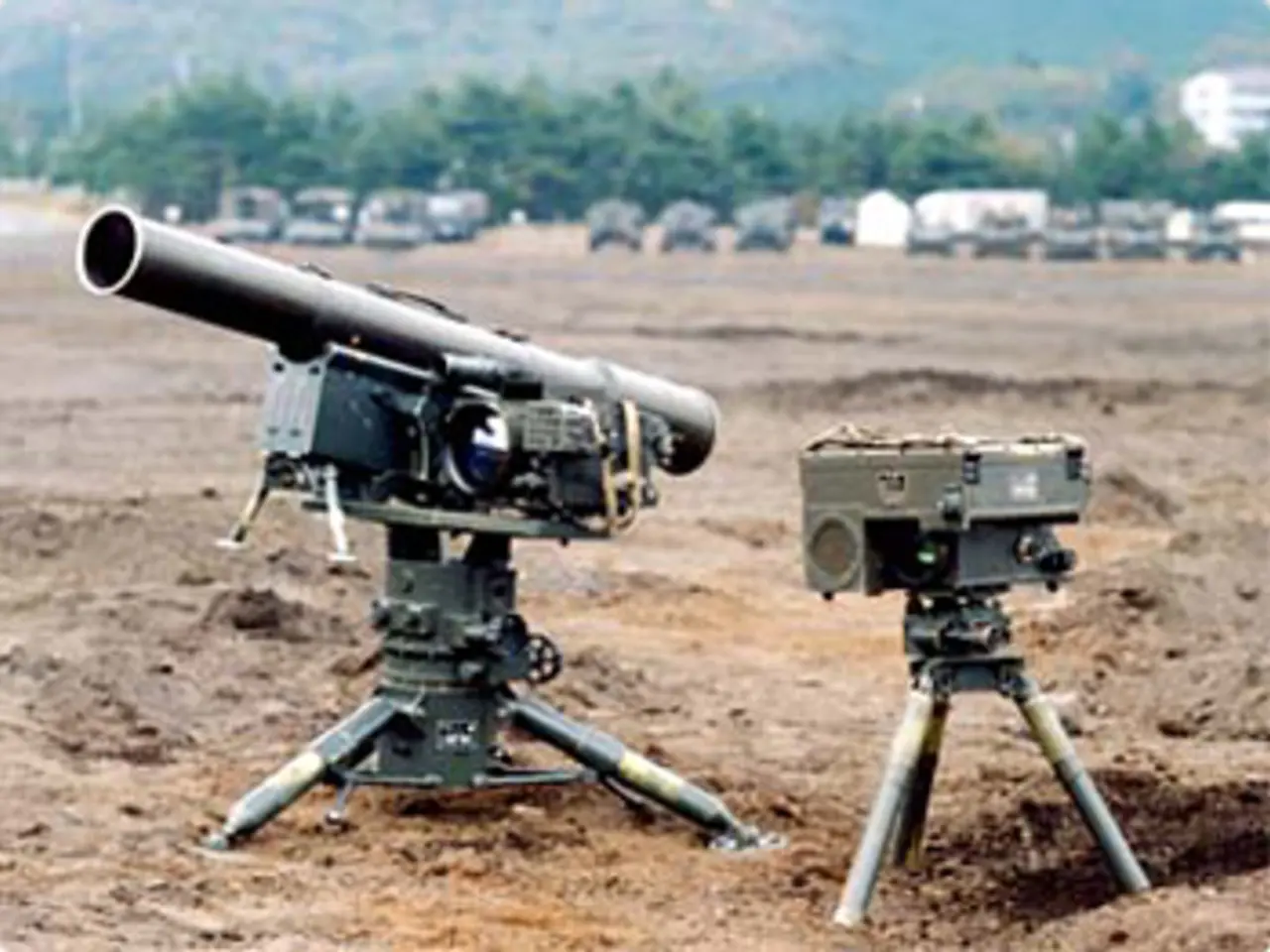Successful strike of a Cirit missile against a UAV, accomplished through Roketsan's PUSU system.
Roketsan's Cirit Missile Demonstrates Effectiveness in Counter-UAV Operations
Roketsan's Cirit laser-guided missile has proven its potential in countering Unmanned Aerial Vehicle (UAV) threats. In a recent test, the Cirit missile successfully intercepted a simulated kamikaze UAV, showcasing its high precision and guidance capabilities [1].
The test was conducted from Roketsan's new PUSU weapons system mounted on a pickup truck. The detection was performed by onboard Active Electronically Scanned Array (AESA) radar, and targeting was done using electro-optical and infrared (EO/IR) sensors. The missile may have used a laser proximity fuse to improve interception effectiveness [1].
Although the Cirit missile was initially designed as an air-to-surface missile for anti-armor and anti-personnel roles, its accurate laser guidance and effective warhead make it suitable for neutralizing UAV threats. Its versatile deployment is evident in its integration on various platforms, such as KAPLAN STA vehicles, unmanned surface vessels (USVs) with KMC systems, and T129 ATAK attack helicopters [1].
Systems using the KMC platform can carry up to eight Cirit missiles, significantly increasing their operational capacity. This flexibility allows for the engagement of multiple UAV targets [1].
The success of the Cirit missile in counter-UAV operations comes at a time when the need for cost-effective anti-UAV solutions is increasingly apparent. Recent conflicts, such as the Russo-Ukrainian War and attacks by Houthi insurgents, have underscored the importance of such solutions [2].
The USAF demonstrated similar capabilities in 2019 with the successful testing of APKWS laser-guided rockets against cruise missile targets. Similarly, Ukraine deployed the L3Harris VAMPIRE counter-UAS system, using APKWS missiles, to engage Russian UAV threats [2].
Roketsan's CEO, Murat Ikinci, stated that the Cirit laser-guided missile successfully hit the target during the first air-target engagement. The successful test may open opportunities for the integration of the Cirit missile on various platforms, further strengthening the capabilities of armed forces [1].
Roketsan continues to enhance the strength of armed forces with field-proven systems, such as the Cirit laser-guided missile. The test was conducted shortly after the IDEF 25 defense exhibition, with Roketsan recently sharing a video demonstrating the test [1].
In summary, the Cirit laser-guided missile is being adapted and successfully tested for counter-UAV applications by combining AESA radar detection, EO/IR targeting, and laser guidance to engage and destroy kamikaze or reconnaissance drones effectively, with flexible integration on diverse vehicle and aerial platforms [1][2].
[1] Roketsan (2022). Cirit Successfully Intercepts UAV Target. [online] Available at: https://www.roketscan.com/news/cirit-successfully-intercepts-uav-target
[2] Defense News (2021). Turkey's Cirit missile successfully intercepts UAV in test, Roketsan says. [online] Available at: https://www.defensenews.com/global/europe/2021/04/29/turkeys-cirit-missile-successfully-intercepts-uav-in-test-roketscan-says/
The Cirit missile, developed by Roketsan, was showcased in counter-UAV operations, demonstrating its effectiveness against simulated kamikaze UAVs. This success has sparked discussions about its potential integration onto various platforms, expanding beyond its initial role in the Russian aerospace and defense industry. In the rapidly advancing technology landscape, such versatile and cost-effective solutions, like the Cirit missile, could find applicability in both Turkish and global industries, specifically those focused on finance and security.








